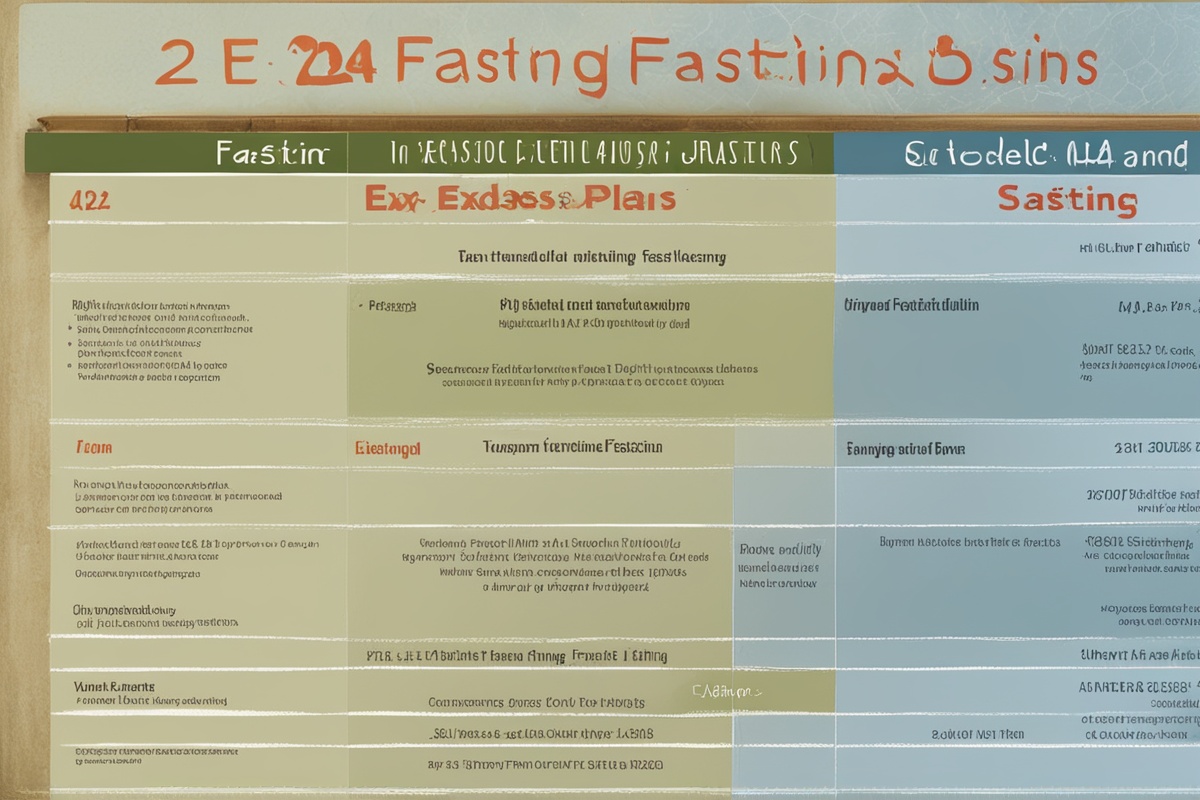Have you ever wondered if there’s a way to reset your body, boost your health, and tap into deep reserves of energy? If so, prolonged fasting might just be the game-changer you’re looking for. Unlike short-term intermittent fasting, extended fasting plans involve abstaining from food for 24 hours or more, sometimes stretching into days or even weeks under proper guidance. This practice isn’t just a trend; it’s rooted in science and has been used for centuries across cultures for both spiritual and physical benefits. In this post, we’ll dive into what prolonged fasting entails, how to approach it safely, and why it’s gaining attention in the health and wellness community. Whether you’re a beginner or a seasoned faster, let’s explore how extended fasting can transform your well-being.
What Is Prolonged Fasting and Why Does It Matter?
Prolonged fasting, often referred to as extended fasting, is the practice of going without food for an extended period—typically longer than 24 hours. This could mean a 48-hour fast, a 72-hour fast, or even multi-day fasts lasting up to a week or more. Unlike shorter fasting windows, such as the popular 16:8 intermittent fasting method, prolonged fasting pushes the body into deeper metabolic states like ketosis and autophagy. These processes are believed to promote cellular repair, fat burning, and even longevity. Historically, humans have fasted for survival during times of scarcity, and today, science is catching up to validate its potential for improving metabolic health, reducing inflammation, and supporting weight loss. But why does it matter? In a world of constant snacking and overeating, extended fasting offers a way to reset your relationship with food and unlock hidden health benefits.
The Science Behind Extended Fasting Plans
Let’s get into the nitty-gritty of what happens in your body during prolonged fasting. Within the first 12–24 hours of fasting, your body depletes its glycogen stores—the energy stored in your liver and muscles—and starts burning fat for fuel. This shift leads to the production of ketones, which are energy molecules that can cross into the brain, providing mental clarity (yes, that “fasting high” is real!). After about 48 hours, a process called autophagy kicks in, where your cells begin to “clean house” by breaking down and recycling damaged components. Studies, such as those published in the journal Cell Metabolism, suggest that autophagy may protect against diseases like Alzheimer’s and cancer. Additionally, extended fasting can lower insulin levels, improve blood sugar control, and reduce markers of inflammation. While the research is promising, it’s important to note that long-term fasting isn’t for everyone, and more studies are needed to fully understand its effects.
Benefits of Prolonged Fasting for Health and Wellness
The benefits of extended fasting plans go beyond just weight loss, though shedding excess fat is often a motivating factor for many. Here are some of the most compelling reasons to consider a longer fast:
- Improved Metabolic Flexibility: Prolonged fasting trains your body to switch between burning carbs and fats more efficiently, enhancing energy stability.
- Enhanced Mental Clarity: Many fasters report a sense of focus and alertness, thanks to ketone production during extended fasts.
- Cellular Repair: Autophagy during long-term fasting may help clear out damaged cells, potentially slowing aging processes.
- Reduced Inflammation: Studies show that fasting can lower inflammatory markers, which are linked to chronic diseases.
- Weight Management: Extended fasting can help break through weight loss plateaus by tapping into fat reserves.
These benefits sound amazing, right? But they come with a caveat: prolonged fasting must be approached with caution and preparation, which brings us to the next point.
How to Start an Extended Fasting Plan Safely
If you’re new to prolonged fasting, jumping straight into a week-long fast is not the way to go. Starting slow and building up is key to avoiding discomfort or health risks. Begin with shorter fasts, like a 24-hour fast once a week, before progressing to 48 or 72 hours. Always consult a healthcare professional, especially if you have underlying conditions like diabetes or are on medication, as fasting can affect blood sugar and nutrient levels. Hydration is non-negotiable—drink plenty of water, and consider adding electrolytes like sodium, potassium, and magnesium to prevent imbalances. Some people also opt for bone broth or black coffee during longer fasts to curb hunger, though purists stick to water only. Listen to your body; if you feel dizzy, weak, or unwell, it’s time to break the fast. Safety always comes first when exploring long-term fasting protocols.
Sample Extended Fasting Schedules for Beginners and Beyond
Creating a sustainable extended fasting plan depends on your experience level and goals. Below are a few sample schedules to inspire you, whether you’re just dipping your toes into prolonged fasting or ready for a deeper dive:
- 24-Hour Fast (Beginner): Eat your last meal at 7 PM, fast through the next day, and break your fast at 7 PM the following evening with a light meal.
- 48-Hour Fast (Intermediate): Start after dinner on Day 1, fast through Day 2, and eat a small, nutrient-dense meal on the morning of Day 3.
- 72-Hour Fast (Advanced): Begin after an early dinner, fast for three full days, and refeed slowly with broth or soup before resuming normal meals.
- 5-Day Fast (Expert): Often done under medical supervision, this involves fasting for five days with only water and electrolytes, followed by a gradual refeeding phase.
Remember, the refeeding phase after a long fast is just as important as the fast itself. Start with easily digestible foods like broth, avocado, or steamed vegetables to avoid digestive distress. Rushing back to heavy meals can shock your system, so take it slow.
Common Challenges and How to Overcome Them
Let’s be real—prolonged fasting isn’t always a walk in the park. Hunger pangs, fatigue, and irritability are common, especially in the first few days as your body adjusts. Social situations can also be tricky; explaining why you’re skipping meals at a family dinner can feel awkward. Then there’s the mental battle—cravings can hit hard when you’re surrounded by food. The good news? These challenges are manageable with the right mindset and strategies. Distract yourself with light activities like walking or meditation, sip on herbal tea to soothe hunger, and remind yourself of your “why”—whether it’s better health, mental clarity, or personal growth. If you’re struggling, shorten your fasting window or seek support from online fasting communities. Persistence and patience are key to mastering extended fasting protocols.
In conclusion, prolonged fasting offers a powerful tool for those looking to enhance their health, reset their metabolism, and explore the limits of their body’s resilience. From the science-backed benefits of autophagy and ketosis to practical extended fasting plans, there’s a lot to gain from this ancient practice when done correctly. However, it’s not a one-size-fits-all solution—safety, preparation, and personalization are crucial to a successful fasting journey. Whether you’re aiming for a 24-hour fast or a multi-day challenge, start small, stay hydrated, and listen to your body’s signals. Have you tried prolonged fasting before, or are you curious to give it a shot? Share your thoughts and experiences with us, and let’s keep the conversation going about how long-term fasting can fit into a balanced, healthy lifestyle.






